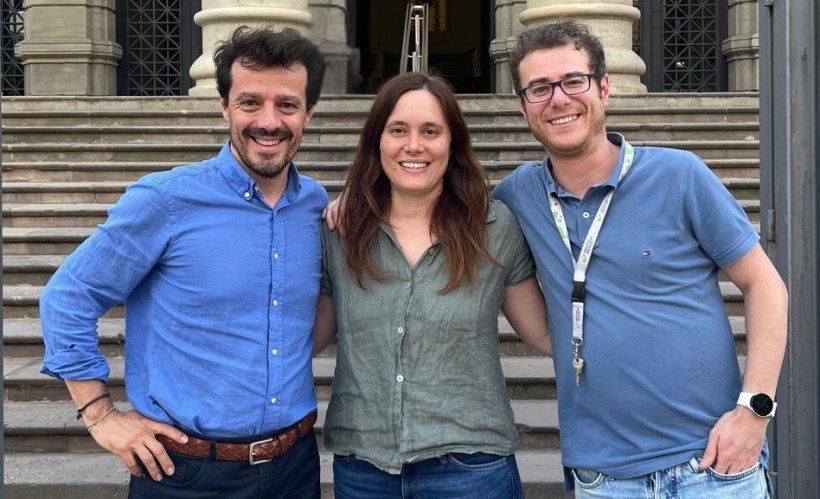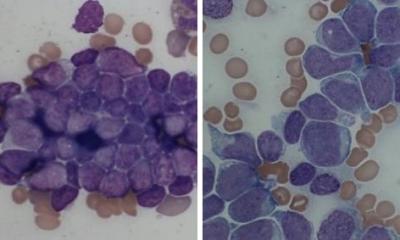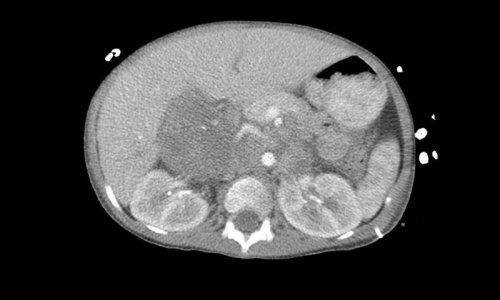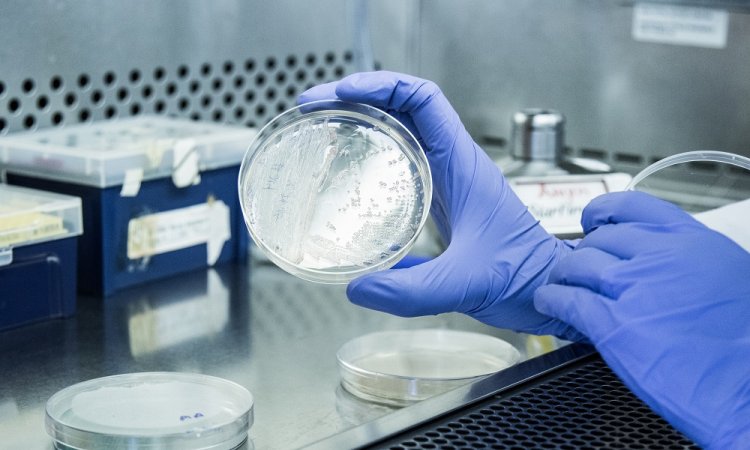
Image source. Josep Carreras Leukaemia Research Institute
News • Foetal development research
Tracing back the origins of AML childhood leukaemia
A team of researchers from the Institute of Oncology of the University of Oviedo (IUOPA), the Josep Carreras Leukaemia Research Institute, the University of Barcelona and the Centre for Biomedical Research in Cancer Network (CIBERONC) have demonstrated that some childhood leukaemia originate during embryonic development, although they do not manifest after a few months after birth.
The researchers published their findings in the journal Leukemia.
Acute myeloid leukaemia is the second most common type of acute leukaemia in childhood and can be diagnosed within a few months of life. The early onset of the disease had led to the suspicion that the tumour could have a prenatal origin. However, proving this theory has been challenging due to the lack of prenatal or birth samples. ‘The opportunity to study the origin of this leukaemia arose from the case of a five-month-old baby diagnosed with acute myeloid leukaemia at the Hospital Niño Jesús in Madrid,’ explains Pablo Menéndez, ICREA professor at the University of Barcelona and the Josep Carreras Institute. ‘The parents, who had preserved the umbilical cord blood, opened a line of research that until now had not been possible to address,’ adds the researcher.
These data are highly relevant for understanding the development of a devastating disease, and the existence of this umbilical cord sample was crucial to be able for conducting a study that had been impossible until now
Talía Velasco
Using precision medicine techniques, researchers analysed the complete genome of the tumour. Unlike tumours in adults, where thousands of mutations are detected, only two chromosomal alterations were identified in this leukaemia. ‘Genome analysis allowed us to design a personalised diagnostic method to monitor the disease,’ says Xose S. Puente, Professor of Biochemistry at the University of Barcelona. Puente, Professor of Biochemistry and Molecular Biology at the University of Oviedo. ‘But these data raise new questions, such as when the tumour arose and in what order these mutations have appeared,’ he highlights. These questions are difficult to answer, since such research requires blood samples from the baby before the diagnosis, something that is impossible in the vast majority of cases. However, in this particular case, the existence of a frozen umbilical cord sample allowed researchers to separate different populations of blood cells at birth and to study whether any of the chromosomal alterations detected in the tumour were already present during foetal development.
The study revealed that a translocation between chromosome 7 and 12 was already present in some haematopoietic stem cells in the umbilical cord. In contrast, the other chromosomal alteration, a trisomy of chromosome 19, was not present in the foetus, but was found in all tumour cells, suggesting that it contributes to increasing the malignancy of the leukemic cells. ‘These data are highly relevant for understanding the development of a devastating disease, and the existence of this umbilical cord sample was crucial to be able for conducting a study that had been impossible until now in acute myeloid leukaemia’, adds Talía Velasco, researcher at the Josep Carreras Institute and the University of Barcelona and co-leader of the study.
In addition to reconstructing the genomic alterations that the cells undergo to generate this leukaemia, the study has also identified a molecular mechanism that had not been observed before in this type of leukaemia and which causes the activation of a gene, called MNX1, which is frequently altered in this type of tumour. Knowledge of these alterations is essential for developing cell and animal models that allow us to understand the disease’s evolution and develop new therapies for treating these pathologies.
The study has been led by Xose S. Puente, Professor of Biochemistry and Molecular Biology at the University of Oviedo-IUOPA, Talía Velasco and Pablo Menéndez, from the Josep Carreras Institute and the University of Barcelona, with participation from researchers from four other institutions, including the Hospital Infantil Universitario Niño Jesús, the Hospital Universitario Central de Asturias, the Instituto de Biomedicina y Biotecnología de Cantabria and the Instituto de Investigación Sanitaria La Princesa de Madrid.
This research has been made possible thanks to the collaboration of the parents and funding from the Ministry of Science, Innovation and Universities, the European Research Council, the AECC Scientific Foundation, the Foundation Unoentrecienmil, the “La Caixa” Foundation, the Government of Catalonia, CIBERONC and the III Health Institute.
Source: Josep Carreras Leukaemia Research Institute
03.06.2024











